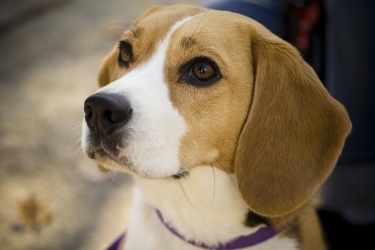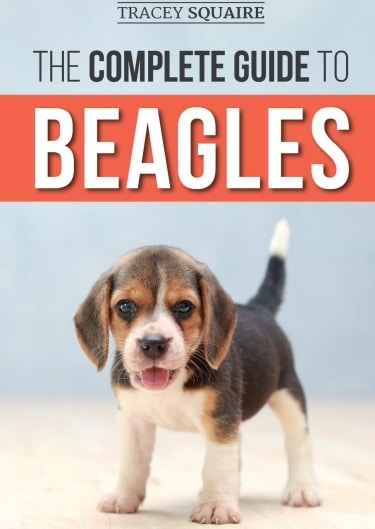
The Beagle was developed in England and is said to descend from the Talbot Hound brought there during the Norman Conquest (1066). The first written reference to the Beagle dates back to the 15th Century; the name is most likely derived from the Celtic word “beag” which means “small.”
The Beagle looks most like the Foxhound and is the smallest of the hounds. Its main prey when hunting is the hare in England and cottontail rabbit in North America. Beagle field trials are extremely popular for many sportspeople. Daily exercise is required for the Beagle, as well is a good fence to prevent him from wandering off in search of an interesting scent.
Height: The heigh for a Beagle is between 11 – 16″ (27.9 – 40.6cm)
Weight: The weight for a Beagle is between 18 – 30 lbs (8 – 13.4 kg)
Coat Type: The Beagle’s coat is short and hard. colors may be a combination of any of the hound colors. In the show ring, those with the “black blanket” on the back are most popular.
Temperament: Beagles have charming, boisterous personalities, and make good family pets. However, their hound instincts and noses often lead them astray when they pick up an interesting scent.
Health Problems: Epilepsy has been demonstrated to have a genetic component in this breed. Be sure to keep your beagle’s ears cleaned and dusted with an antiseptic powder to prevent infection.
Special Interest: The Beagle is still used today, either led in packs by hunters on horseback or by individual hunters on foot, to track hares and rabbits. It is also interesting, although unfortunate, to note that beagles are the most popular dog used in research and science due to their size, temperament and stamina. And,… the most famous Beagle is Snoopy, the lovable dog in the Peanuts comic strip.
Classifications:
AKC: Group 2 – Hounds
CKC: Group 2 – Hounds
KC: Sporting – Hound Group
FCI: Group 6
ANKC: Group 4 – Hounds
Kennel.com Recommends Complete Guide to Beagles
Complete Guide to Beagles
 Kennel.com – Complete Guide to Dogs The Dog Lovers Guide
Kennel.com – Complete Guide to Dogs The Dog Lovers Guide